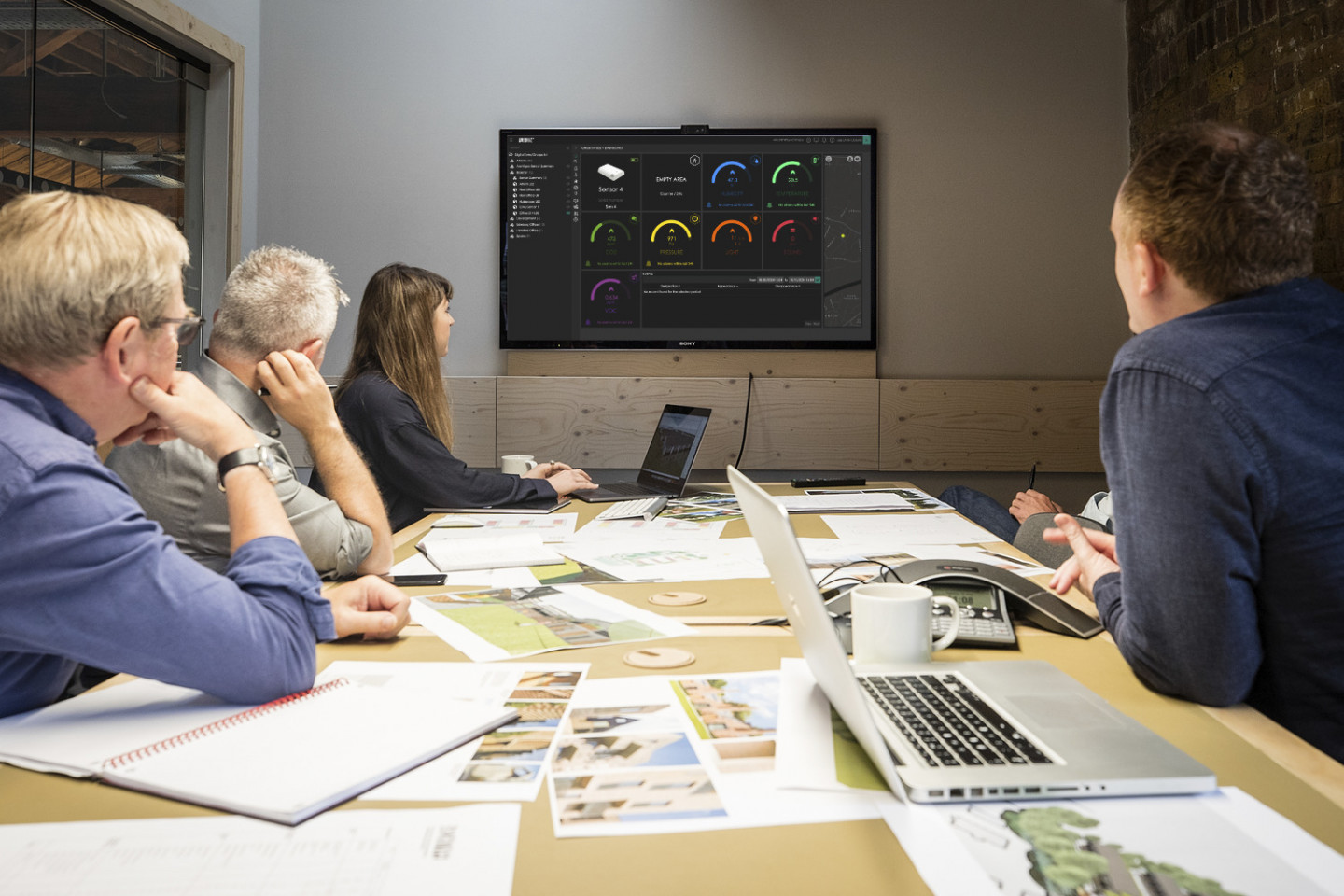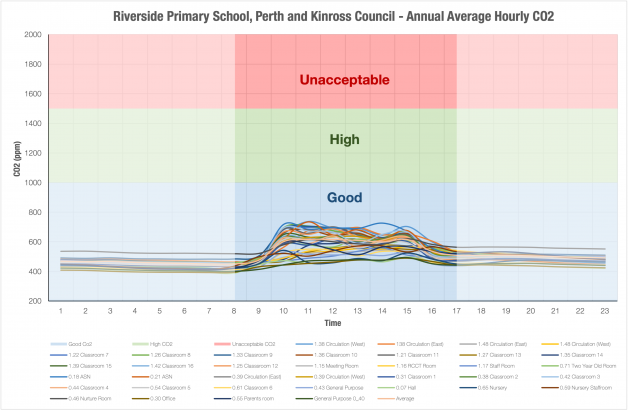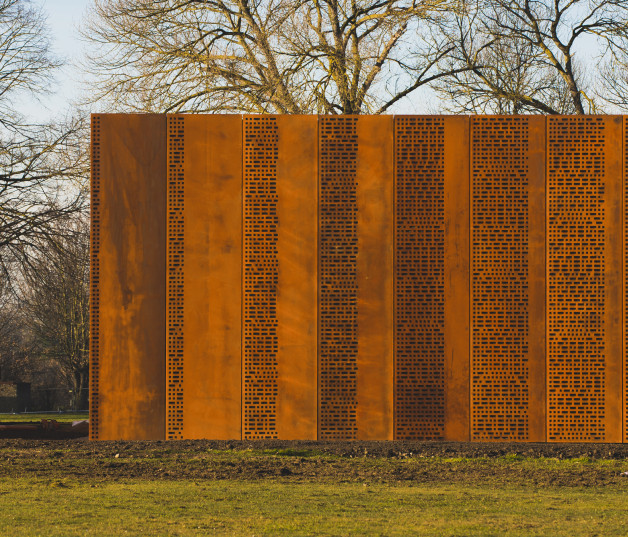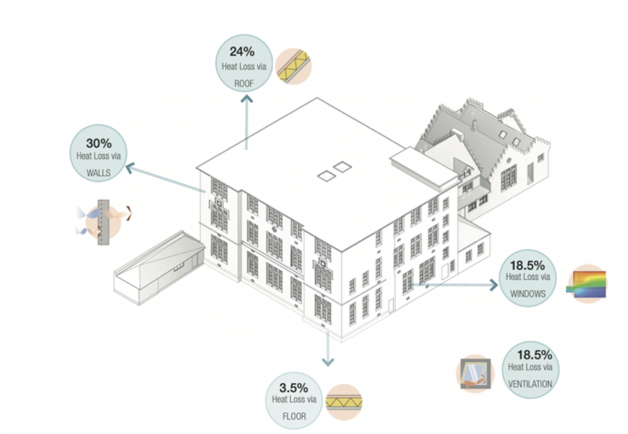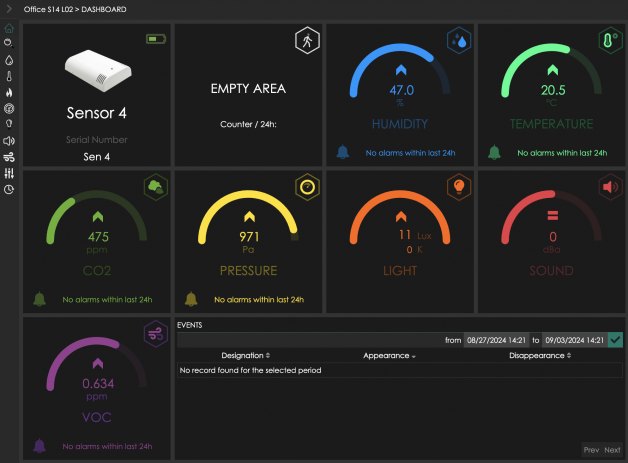We have all heard by now that 80% of the built environment of 2050 already exists today
- and that was as of 5 years ago.
The year 2050 is important because it is when the UK legally needs to have achieved ‘net zero’; the fundamental point is that that we cannot ‘new build’ our way out of the Climate Emergency.
But do we know how that 80% of the built environment is currently performing, and how to improve these buildings as we seek healthier, more comfortable, more efficient, and decarbonised buildings?
At a high-level, we know that our buildings are leaky, aged, inefficient, and sadly unhealthy, and that a fabric-first approach enables buildings to be energy-efficient with smaller mechanical systems and greater climate resilience.
When retrofitting buildings to perform better, how do we decide which intervention to pick, and which not to? Triple-glazed windows or an insulated ground floor slab? An MVHR system or airtightness improvements? This is where we have seen that a data-driven dialogue offers the most robust approach, because the priorities of interventions shift from building to building.
We’ve spoken with four clients to understand why they sought data to understand their buildings’ performance, and what this data means to their organisations’ decision-making.
Data Improving Environment
Guy Collins-Down, Chief Operating Officer for Alleyn’s School in Dulwich, London:
Why does data matter to you as an education provider?
“Since time began, we have been making decisions by assessing our surroundings. This has more than often been qualitative understanding of our situations, but the advent of technology and price of sensor technology reducing significantly has really helped us to make scientific based decisions around our learning environments which also bring sustainable benefits. Putting a child in a classroom where the CO2 goes over 1500 parts per million for any length of time is like giving them two glasses of wine. Why would we do that to our children if we want them to be their best?”
How has data helped shaped your understanding of your estate?
“Data is the bedrock of understanding. Without such inputs we can’t make sensible decisions about where to prioritise our investment. Having started collecting CO2, temperature and VOC levels we have so much more knowledge now than before, and where we thought we didn’t have issues on our estate, we do, and where we thought we were fine, we actually aren’t. Without this data, we would have made costly decisions around investment which wouldn’t have had the effect we expected.”
What is next for Alleyn’s School and its decarbonisation journey, empowered by this data?
“We believe strongly in the marginal gains of classroom design. Small changes can have far bigger impacts than most think, so we are looking to run as many proof of concepts, backed by data. Try as much as we can, fail fast and innovate are all bywords to get this right. With an estate of over 23 buildings ranging in age from 1 to 150 years, we wouldn’t be able to transform our estate without data, so encourage anyone else to do the same, you might be surprised with the results!”
Data Informing Strategy
Gael Dundas, Assistant Director, Collections Management of Imperial War Museum
What is driving the Imperial War Museum’s quest for data on its buildings?
“As the custodian of historic estates and irreplaceable collections, it is essential that Imperial War Museums (IWM) find the very best ways to preserve and maximise the life of their collections whilst utilising our historic buildings, without compromising their integrity.
Working with Architype, we have used a variety of data and processes to inform our strategic decision making from site-wide estate strategies, through to individual components of projects, to ensure our approaches are optimised wherever possible.”
And how has IWM been able to deploy these practices at a practical project-level?
“Utilising data gained from forensic surveys, including thermal imaging, thermal modelling and airtightness testing we have developed proposals which carefully align types of conversions and therefore uses, with our varied historic building stock. As an example of this, it was concluded following lifecycle analysis of potential solutions, that our Paper Store building would achieve better performance and value as a new build rather than the conversion of a large steel framed vehicle storage building as was the original brief. This was to enable us to optimise fire resistance, rainwater collection and disposal, the volumetric optimisation of the stores and the utilisation of ground-coupling to significantly reduce energy whilst delivering a very stable and low energy, passive environment. The large vehicle shed was then given an alternative use to house four large, purpose-built highly-insulated freezer/fridge storage buildings/pods which slotted into each of the existing structural bays to negate those previous issues to deliver ultra-high performance with a fully reversible design solution which successfully interpreted the original use of the historic building.”
Data for Understanding Buildings
Obtaining building performance data is critical to decarbonising buildings and therefore company footprints. As the industry looks to the imminent launch of the UK’s Net Zero Carbon Building Standard, it is becoming increasingly accepted that a building can only be called Net Zero once its operational energy is brought in line with industry targets and its operational energy and carbon are quantified, and then balanced or offset. This applies equally for new buildings, and existing ones.
The City of Edinburgh Council worked with Architype to develop a decarbonisation pathway for its estate of over 300 buildings. This resulted in the development of the EnerPHit-informed Retrofit Plan which utilises the tried-and-tested predictability of the Passivhaus Planning Package (PHPP), mapped onto existing buildings using data from bills, thermographic surveys, point-cloud surveys, airtightness tests, and opening up works to understand the full impact of various levels of intervention.
Patrick Brown, Head of Sustainable Construction Delivery, City of Edinburgh Council:
What led to the creation of the EnerPHit-informed Retrofit Plan?
“As a consequence of the City of Edinburgh engaging Architype for the delivery of a number of new build certified Passivhaus Schools, the utility of PHPP modelling became apparent to CEC as a client organisation.
As a consequence of this CEC engaged Architype to undertake PHPP analysis of existing buildings to properly assess the implications of deploying zero direct emission heat sources (typically air source heat pumps). The outcome of this approach resulted in the EnerPHit Informed Retrofit Plan (EiRP) being developed. This rigorous and methodical approach provided an indication of capital cost, energy use, carbon reduction and a number of other parameters, for a range of fabric and services interventions of different levels, from minimal levels of intervention through to full EnerPHit.”
“For the first time there was robust analysis giving an understanding of the implications of installing heat pumps. This was very well received, and the City of Edinburgh Council shared a briefing document with a number of other Scottish Local Authorities which replicated the approach. This has given rise to around 30 Local Authority type buildings (schools, community centres, offices etc) being analysed, establishing a substantial data set which can be broadly compared and has the potential to be analysed further; to give indicative outcomes for buildings of similar typologies.”
And now the Council is currently constructing its first EnerPHit-informed retrofit pilot projects which is exciting to follow. How is the Council looking to progress onwards with its decarbonisation given the high pressure on public finances?
“While it is expected that the majority of retrofit works delivered by Local Authorities will be to lower levels of fabric improvement due to the significant capital cost of retrofit fabric interventions, for large, complex or problematic buildings, the EiRP analytical approach has significant merit in informing an investment decision.”
The City of Edinburgh Council’s journey has unlocked a robust methodology to quantifiably understand retrofit opportunities by health, operational, upfront, and lifecycle cost impacts. These insights can shape and optimise design interventions, but we must not forget that retrofit projects are still susceptible to the performance gap, akin to their new-build counterparts. Whether your project is a retrofit or new build, evaluating its performance and responding to these insights is a crucial step to ensuring the best outcomes.
Data in Use
Powys Council in Wales recently completed their Welshpool Church in Wales Primary School which was their first certified Passivhaus building as part of the Sustainable Communities for Learning Programme with Welsh Government. The Council was very interested to understand the true performance of this new approach to construction and appointed Architype to undertake 12 months of building performance evaluation (BPE) on it. We spoke with Jim Swabey of Powys County Council on how data helped deliver the successes the school now celebrates.
Jim Swabey, Senior Manager, Property Design Services of Powys County Council.
What was driving Powys’ decision to ascertain more data on this school’s performance?
It was clear to the delivery team that there was a need for greater investment in commissioning and soft landings than had traditionally been used. Although the building’s mechanical and electrical systems are individually straightforward it was essential to achieve a balance between them. Architype’s Jon Hollett was appointed as Mechanical and Electrical specialist to work alongside the council’s engineers and confirm that the building performed as intended.
Frequently, performance data is analysed once 12 months of data has been logged. How did the team approach monitoring for this school?
Key to this task was access to accurate, real-time data via an online platform that interfaced with the school’s building management system. The ability to read in-use operational data from temperature, relative humidity and CO2 sensors allowed an informed optimisation of building systems that directly benefitted the school.
The team’s data review helped identify big-ticket opportunities such as an electric heater battery running at incorrect times, and helped to halve the small power energy use, leading to an operational saving of £60,000 a year. The ease of access to the building’s operational data has closed the gap between design intent and reality, and the school is now operating at 60kWh/sqm/yr.
Wow – those are pretty significant outcomes. So finally, what is on the horizon for Powys next?
Moving on, we will be able to justify the specification of high-performance buildings as part of the Council’s invest-to-save strategy, supported by a wealth of data from recently completed Passivhaus projects.
Data does not dictate the certainty of outcomes, but it does provide invaluable insights that can enable educated decision-making. Historically, the industry has shied away from obtaining and engaging with data on how buildings perform. However, with the recognition that 50 years of sustainability efforts have failed to sufficiently shape the industry, perhaps now is exactly the right time to break ‘business as usual’ practices, and approach the retrofit emergency differently by embracing and applying a data-driven rigour to the built environment.
Seb Laan Lomas is an associate at Architype, a UK practice leading the industry in high-performance architecture with a low climate impact.
Sources
[1] UKGBC [2019] Accessed 27th August 2024: https://ukgbc.org/news/ukgbc-responds-to-ccc-housing-report/
[2] UK Gov [2024] Accessed 27th August 2024: https://www.gov.uk/government/publications/adapting-historic-homes-for-energy-efficiency-a-review-of-the-barriers/adapting-historic-homes-for-energy-efficiency-a-review-of-the-barriers
[3] UK Gov [2024] Accessed 27th August 2024: https://www.gov.uk/government/publications/damp-and-mould-understanding-and-addressing-the-health-risks-for-rented-housing-providers/understanding-and-addressing-the-health-risks-of-damp-and-mould-in-the-home--2
[4] Innovate UK [2016] Accessed 27th August 2024: https://www.ukri.org/wp-content/uploads/2021/12/IUK-061221-NonDomesticBuildingPerformanceFullReport2016.pdf
[5] RIBAJ [2019] Accessed 27th August 2024: https://www.ribaj.com/intelligence/climate-change-emergency-regenerative-design-michael-pawlyn
